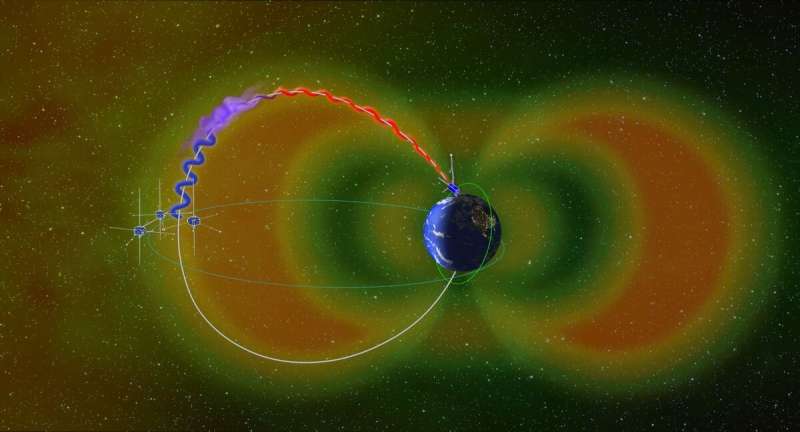Phys.org March 30, 2022
The classical quasi-linear theory of electron precipitation through moderately fast diffusive interactions with plasma waves predicts that precipitating electron fluxes cannot exceed fluxes of electrons trapped in the radiation belt, setting an apparent upper limit for electron precipitation. From low-altitude satellite observations, an international team of researchers (USA – UCLA, France, Japan) has shown that ~100 keV electron precipitation rates often exceed this apparent upper limit. They demonstrated that such superfast precipitation is caused by nonlinear electron interactions with intense plasma waves, which have not been previously incorporated in radiation belt models. The high occurrence rate of superfast precipitation suggests that it is important for modelling both radiation belt fluxes and space-atmosphere coupling…read more. Open Access TECHNICAL ARTICLE

Electrons in a Van Allen radiation belt (blue) encounter whistler waves (purple) and are sent raining toward the north pole (red)… Credit: Nature Communications volume 13, Article number: 1611 (2022)